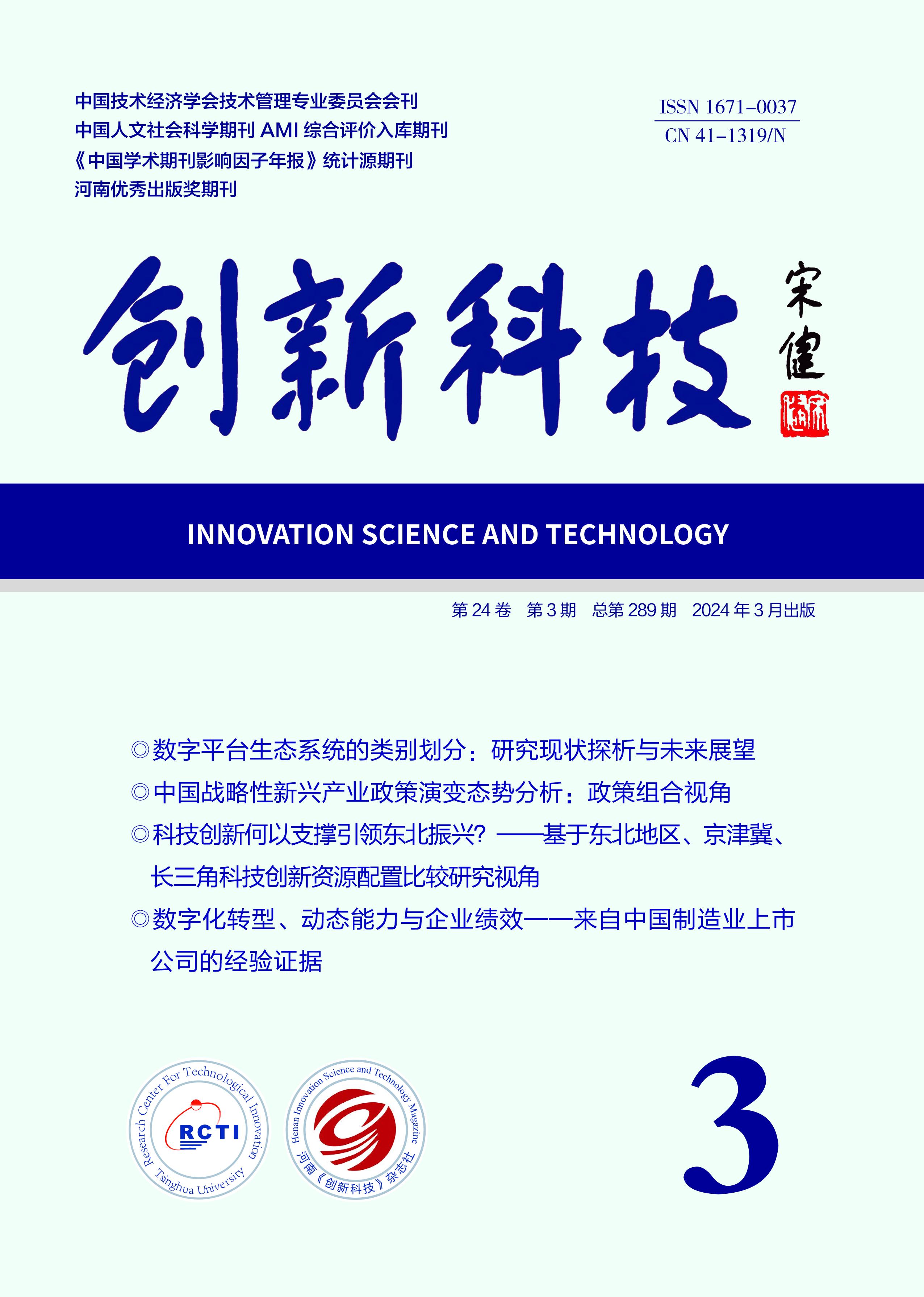INNOVATION SCIENCE AND TECHNOLOGY
Quick Search

All publication are peer-review
Peer review will take the from of double-blind review Judge objectively and impartially
There is no conflict of interest for the reviewer
Review articles shall be kept strictly confidential prior to publication
Regional Science & Technology and Innovation
Study on the Coupling and Coordination of Digital Economy, In⁃
dustrial Structure, and Ecological Environment in the Yellow River Basin
Guo Haiming, Fan Yong
(School of Statistics and Data Science, Lanzhou University of Finance and Economics, Lanzhou 730000, China)
Abstract: The Yellow River Basin, as a strategically important ecological barrier and eco⁃
nomic zone in China, is a key area for promoting high-quality and coordinated regional develop⁃
ment. The digital economy, as a new engine of the modern economy, provides important opportu⁃
nities for empowering industrial structure upgrading and promoting ecological environment im⁃
provement. The relatively slow development and severe ecological environment situation in the
Yellow River Basin have prompted the need for coordinated development of the digital economy,
industrial structure, and ecological environment. This approach has provided a clear path and ex⁃
pansive development opportunities for the high-quality development of the Yellow River Basin.
This paper would like to further explore the coupling and coordination relationship between the
digital economy, industrial structure, and ecological environment in the Yellow River Basin and
determine the spatial development pattern of the Yellow River Basin's ternary system. To
achieve this, based on the mechanism of coupling and coordination between the digital economy,
industrial structure, and ecological environment in the Yellow River Basin, we constructed a
comprehensive evaluation index system for the digital economy, industrial structure, and ecologi⁃
cal environment in the Yellow River Basin using provincial panel data from 2013 to 2021. The
coupling and coordination model, LISA spatiotemporal path, LISA spatiotemporal transition, and
gravity model were used to measure and analyze the coupling and coordination degree of the Yel⁃
low River Basin's ternary system. The results indicate that: ①From 2013 to 2021, the Yellow
River Basin has experienced positive overall development in its digital economy, industrial struc⁃
ture, and ecological environment. Development disparities among different regions have gradu⁃
ally decreased. The overall level of coordinated developmentof the binary and ternary systems in
the Yellow River Basin is rising, but there is significant spatial heterogeneity, generally observed
as "downstream>midstream>upstream". ②The coupling coordination degree of the ternary sys⁃
tem in the Yellow River Basin shows minor fluctuations in local spatial dependence and growth
processes and the overall spatial pattern shows stability. In addition, the regional spatial correla⁃
tion pattern of the coupling coordination degree of the ternary system in provinces shows path de⁃
pendence and transfer inertia and is less affected by neighboring provinces. Significant differ⁃
ences exist in the spatial evolution pattern of the ternary system in the Yellow River Basin's up⁃
per, middle, and lower reaches. ③The provincial spatial correlation strength of the ternary sys⁃
tem in the Yellow River Basin exhibits a multi-core aggregation pattern. The coupling coordina⁃
tion degree of the Yellow River Basin shows a spatial pattern of development, with distinct up⁃
stream and downstream areas. The spatial correlation strength of the coupling coordination devel⁃
opment of each province in the basin presents a multi-core aggregation pattern. To improve the
coordinated development and spatial development pattern of the digital economy, industrial
structure, and ecological environment in the Yellow River Basin, it is necessary to consider the
region's resource endowment and development status. This involves strengthening the construc⁃
tion of digital infrastructure, optimizing the spatial layout of industrial structure, implementing
ecological zoning governance, tailoring precise policies based on local conditions, addressing ex⁃
isting development shortcomings, and promoting greater spatial and deeper level exchanges and
cooperation among provinces in the basin, which will make the Yellow River Basin an important
contributor to China's economic and social development.
Key words: Yellow River Basin; digital economy; industrial structure; ecological environ⁃
ment; coupling coordination